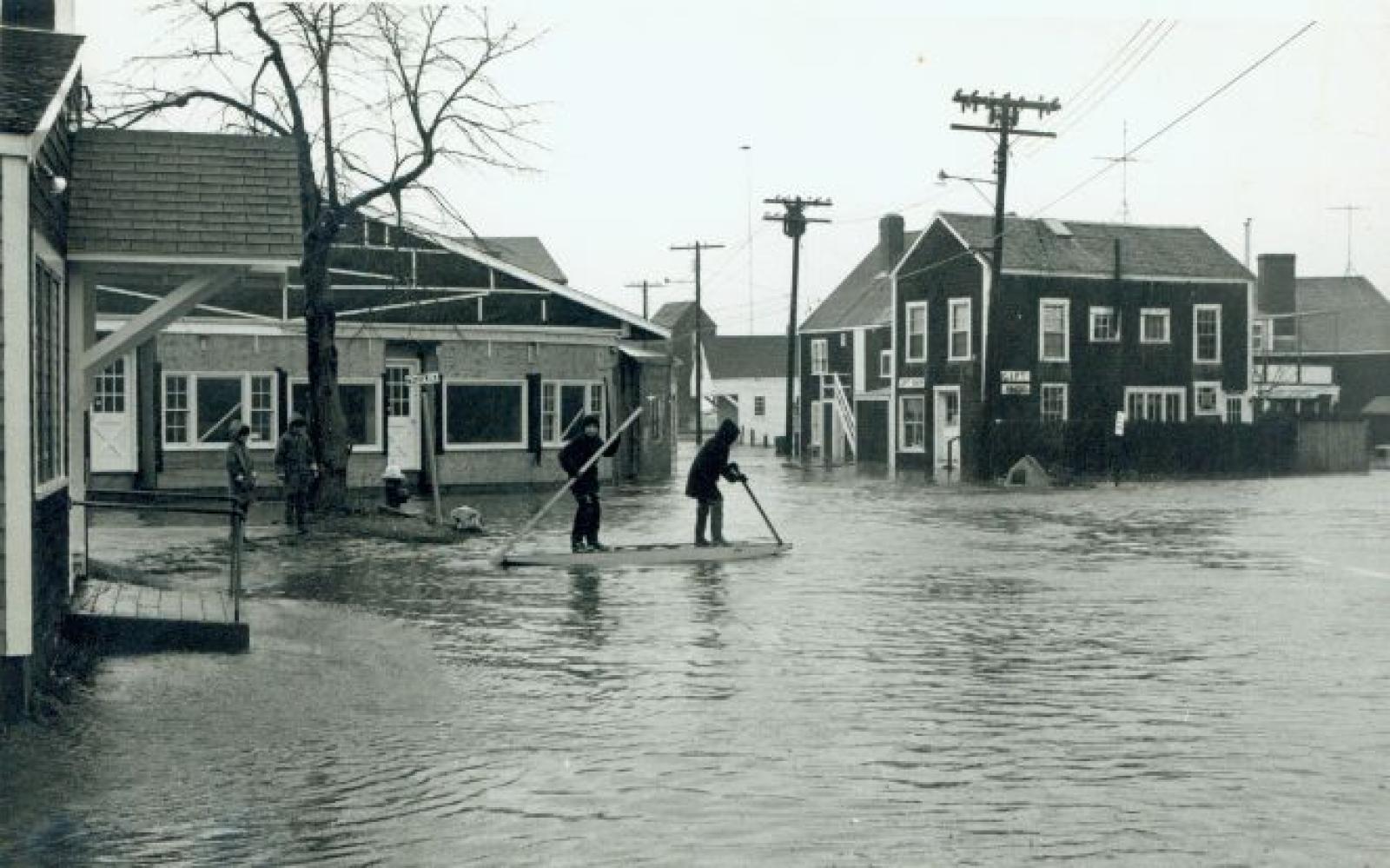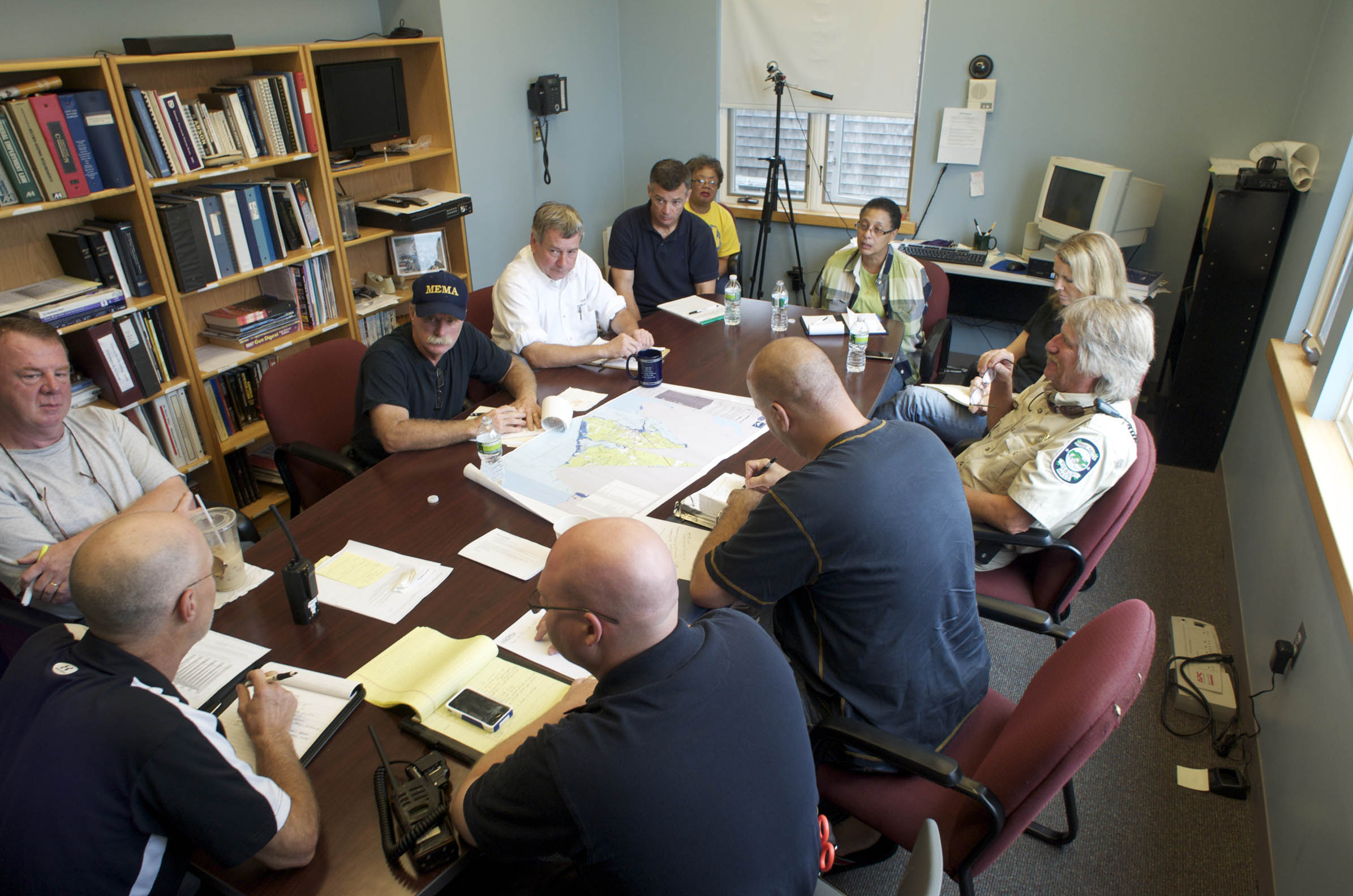Emergency preparedness leaders on the Vineyard say they are not only well along in their plans for this year’s hurricane season — which began officially June 1 — but their preparations have improved over a year ago.
Last summer’s close approach of Hurricane Irene was not as severe for the Island as in other parts of New England. But the storm did help Vineyard decision makers move forward in better preparing for the big one.
The largest challenge the directors face is alerting and moving people — reaching out to the transient community and Islanders to get them the information they need in the event of an approaching storm.
The consequences of a severe hurricane are unfathomable to most Vineyarders and their guests. Memories are short. Hurricane Bob, one of the costliest storms in New England history, left much of the Island without electricity for a week in 1991, even though it was not a severe hurricane. With no recent history on the Island of a severe storm, emergency management directors are trying to work on an alerting system tailored to the current population.
Edgartown fire chief and the town’s emergency management director Peter Shemeth said the Island infrastructure and technology necessary to prepare for and deal with a hurricane is in place. It is the thousands of people who might not be paying attention to the weather who are the focus of Vineyard emergency officials. “We are worried about the people who fall through the cracks,” Mr. Shemeth said.
Island directors urge all residents to have a three-day supply of food and materials and prescription drugs, and to have it now. “The time to get the food is not in the hours before a storm arrives,” Mr. Shemeth said.
Similarly, the time to evacuate a low-lying area and move into a shelter is not during the height of a storm, because that could jeopardize the lives of those who are called in to pick up a person when the roads are covered with fallen trees and debris.
Christopher Cini stepped into the position of emergency management director for Tisbury while Hurricane Irene was spinning just south of the Vineyard last year. Mr. Cini had already been the emergency management director for West Tisbury. Still, it was an intense opening day for a job. Mr. Cini, 38, has worked for Tisbury for 14 years, first as an EMT and now as a paramedic. He concurs that the Island is far better poised to deal with a big storm than it was years ago.
The Island’s emergency management directors meet monthly. At their next meeting on Thursday, August 9, they will concentrate on “coming up with a prescribed message that we can give out to the community,” Mr. Cini said. They will discuss continuing with a generic Code Red announcement that will be shared with the public 72 hours prior to the anticipated arrival of a severe hurricane. The system is already in place and has been used before.
Those residents who have signed up for Code Red in their town will receive a recorded phone message prior to and during a storm, offering important information specific to the town they live in.
While the forecasting gets better at the National Hurricane Center, Mr. Cini said the resources here on the Island also have been expanded. The shelters are manned by the local Red Cross. “With the medical reserve corps [at the Red Cross shelters], we now have a nursing level of care at the shelters we didn’t have before,” Mr. Cini said. The Tisbury elementary school is a designated Red Cross shelter during a storm. Mr. Cini said it is the one shelter on the Island that is set up for people with special needs.
Next door to the school is the yet-to-be opened Tisbury fire and emergency station. “The new station is designed to be an emergency center during any natural disaster. It is fully powered and self-contained. It should be open by the end of August,” said fire chief John Schilling. “It has its own radios, generator, walk-in [component] for help.”
In the event of a storm, the Chilmark Community Center becomes a Red Cross-manned shelter. The facility can run on an independent, 10-year-old generator that was used during Hurricane Irene. There was a learning experience during last year’s hurricane.
Tim Carroll, Chilmark’s executive secretary who is also its emergency preparedness director, said the center was not only used as a shelter but also a critical place for many who wanted to recharge their cellphones and computers. “During Irene, the community center became a drop-in center,” said Mr. Carroll.
In the last five years, the center has received all new hurricane-rated glass windows. They’ve added to the inventory of preparation gear, including 25 cots and additional food supplies.
Peter Martell, who has been the emergency preparedness director for 37 years in Oak Bluffs, wrote a plan for storm preparation for his town that is so comprehensive that it may be adopted in other towns. Mr. Martell said: “I do disaster plans in my sleep. And I share them with the other directors.”
Oak Bluffs is the home of the Martha’s Vineyard Hospital and other facilities. Also, the Oak Bluffs elementary school is a shelter.
“He has written a great plan,” said John Christensen, an emergency director for West Tisbury. “We plan on aligning with that.”
Mr. Shemeth said he thinks the ingredients in Mr. Martell’s plan can be copied and made town-specific.
Mr. Shemeth said that the working relationship between Island towns and the Red Cross has improved significantly over the years. He said there was a time when the mainland-based Red Cross tried to convince the Vineyard to have just a single Red Cross shelter to service the whole Island. The local community resisted.
“There was no way that a person living in Chilmark was going to drive all the way to Edgartown,” Mr. Shemeth said. Now the local chapter has a very close working relationship with the directors, and Red Cross representatives even attend the local emergency preparedness meetings.
Mr. Shemeth said the Salvation Army, under the leadership of Richard Reinhardsen, will offer a canteen cooking operation at the Tisbury elementary school that can provide food for all those residing in Island shelters. It can also provide food and water to those work crews that are out in the street cleaning up debris. The Salvation Army not only has the kitchen, they have the vehicles to transport the food.
Only recently have pet owners been allowed to take pets to Island shelters. Mr. Shemeth credits assistant director Rita Brown for trying to create a way for pet owners to bring their pets. “Pet owners wouldn’t leave their homes because of their pet. Their pet is their child,” Mr. Shemeth said.
Looking at the way the many Island resources have come together in the past, Mr. Shemeth said: “What I see is very encouraging.”
Another significant player in the discussions about improving hurricane preparedness has come from the Steamship Authority, which provides the critical ferry service between the Vineyard and the mainland. General Manager Wayne Lamson said someone from the Authority usually joins the teleconference conversations between the different agencies.
Mr. Lamson said it is important for the public to be aware of an impending storm and start their planning sooner than later. In the case of Hurricane Irene, it was very clear that the Authority had to protect its resources, its ferries. “If there is a hurricane in the forecast, we like to get some of our vessels into Fairhaven, behind the hurricane barrier, before it closes,” Mr. Lamson said. “At some point we have to move, so we don’t get shut out.”
“If there was an evacuation needed, we would do all that we could to get people off the Island. Last year with Irene we worked with the Coast Guard. They allowed us to operate while they were closing the ports.” Mr. Lamson said. Returning ferries weren’t empty, they brought much needed NSTAR utility vehicles to the Island, in case something did happen.
Fortunately for the Vineyard, all the activity that took place on the Island and on the nearby mainland was mostly a drill.








Comments (8)
Comments
Comment policy »